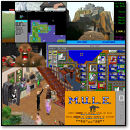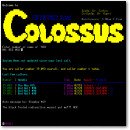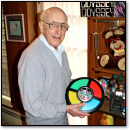[ Retro Scan of the Week ] The Transistor
June 2nd, 2008 by Benj Edwards The transistor — need I say more?
The transistor — need I say more?
Let’s give a big round of applause to the electronic component that made our current computer revolution possible: the transistor. Here’s an advertisement from RCA touting the benefits of solid state transistor technology from a time when it was still novel. 55 years later, we’d be cramming 300 million of these onto a single piece of silicon smaller than a penny. And Microsoft Word still runs slowly.
Discussion topic of the week: What was your first computer’s CPU clock speed?
If you use this image on your site, please support “Retro Scan of the Week” by giving us obvious credit for the original scan and entry. Thanks.






June 2nd, 2008 at 1:44 pm
A 166 MMX Pentium was my first computer ever; back in the day you could boot the latest Windows (95 in this case) in something around 15 seconds…
But yeha, Word killed it, I remember it being as slow as some 3D games from the day ^^’
June 2nd, 2008 at 1:54 pm
First device capable of running multiple programs (ROMs in this case): MOS 6507 @ 1.19 MHz [Atari 2600]
First device that had a keyboard and could run “anything”: MOS Technology 6510 @ 1.02 MHz [Commodore 64]
First device that was IBM PC compatible: Intel 80286 8 MHz / 12 MHz switchable [I don’t remember the brand, but it wasn’t one of the big ones and it isn’t still around today; bought from Sears and I’d know it if I saw it]
Layne
June 2nd, 2008 at 2:00 pm
My very first PC was 486 DX of 66 MHz. With its 4 megs of memory I was king of the hill. I had all the optional (at that time) equipment for it: mouse, joystick (more important for gaming than mouse at that time), soundcard. Later I bought 8 more megs of RAM for it and a lightning-fast 4x CD-ROM. Oh yeah, and it had 80 megs of HD – that was a space for lots of games at that time…
June 2nd, 2008 at 5:29 pm
I also started with a 2600, but first ‘real’ computer was a Tandy 1000 with a 2 MHz (I think) 8088. And it only cost me $2000!
June 2nd, 2008 at 7:14 pm
It’s interesting that the advertisement is trying to sell the very concept of the transistor. I suppose the add seems odd to me just because I have the benefit of hindsight. I mean, it seems that the whole ad could consist entirely of:
Q: What is this?
A: A miracle. Buy a ton of them.
As for my first computer, it would be a 1MHz 6502 in an Apple II+. Of course, that was a family computer. The first machine I actually owned had an 8 MHz 286 if I remember correctly.
June 2nd, 2008 at 11:59 pm
1,78 MHz (Atari 65XE). And my wordprocessor worked great.

Damn, probably my (cheapest one) MP3 player has bigger computation power now.
June 3rd, 2008 at 12:59 am
LOL I’m going to work the phrase “I TRANSIST!” into everyday conversation. Great RSOTW as always, Benj!
June 3rd, 2008 at 3:54 am
1,77Mhz Z80 in a TRS80 Model 1, but that was my father’s. My first very own machine was an XT Clone with something around 8Mhz.
June 3rd, 2008 at 1:16 pm
1.77MHz Z80 in a Video Genie EG3003, a clone of the TRS-80. Started with 16KB RAM and 12KB ROM.
Later expanded to 64KB RAM, external system bus with floppy disks (35 track single sided single density, 80KB on a floppy), and later even put CP/M on that machine. Overclocked with a better CPU to 5MHz or so..
June 3rd, 2008 at 3:35 pm
0.895mhz (TRS-80 CoCo)
June 3rd, 2008 at 7:25 pm
Packard Hell 486 DX2 66 MHZ
June 4th, 2008 at 8:16 am
Apple II with something like 1,000,000 Hz it was the king of my living room. Good bless it, that machine is still working today.
June 5th, 2008 at 9:25 am
The first computer I ever bought was a Northgate Slimline 386 20MHz with a 100 MB hard drive (but the drive had to be partitioned into 4 logical drives of 25 MB each because DOS couldn’t address the whole physical drive!). I think it had 1 MB of RAM. The machine cost $3,184.00. After 18 years, I still have the (totally awesome) Northgate keyboard.